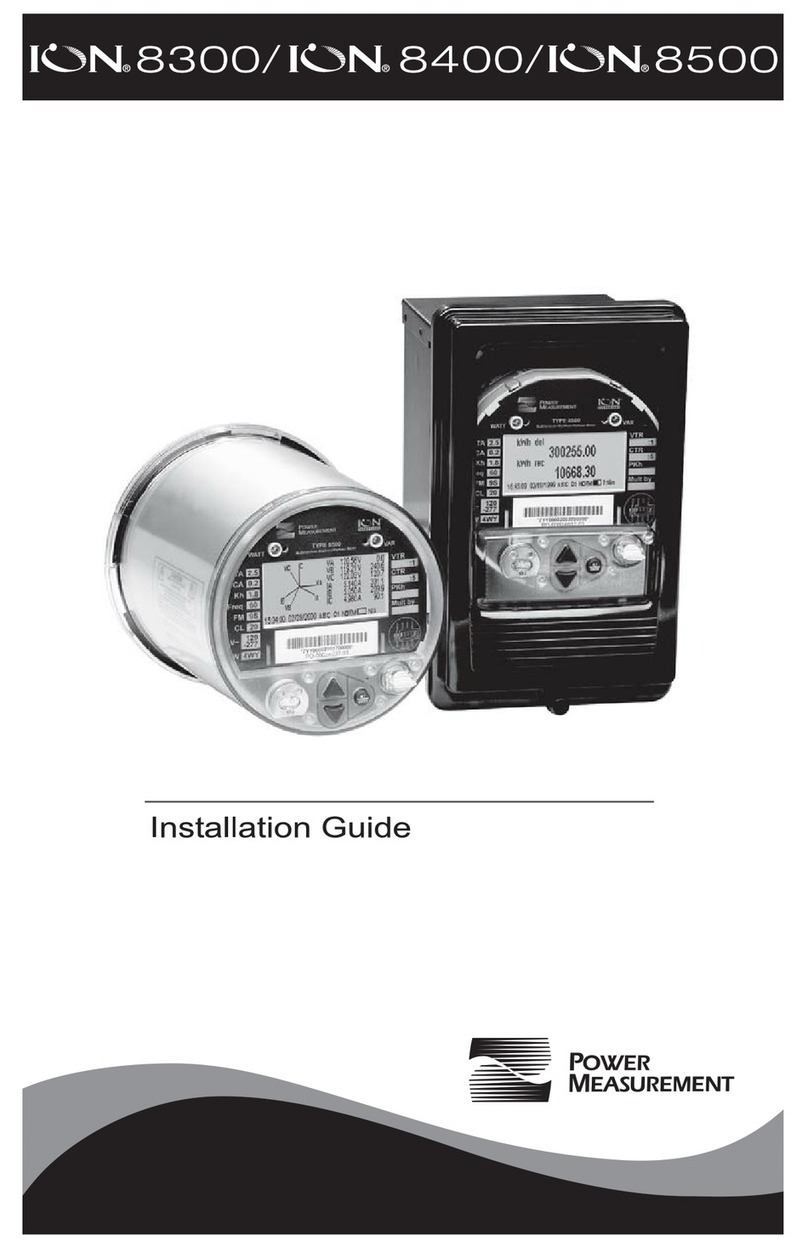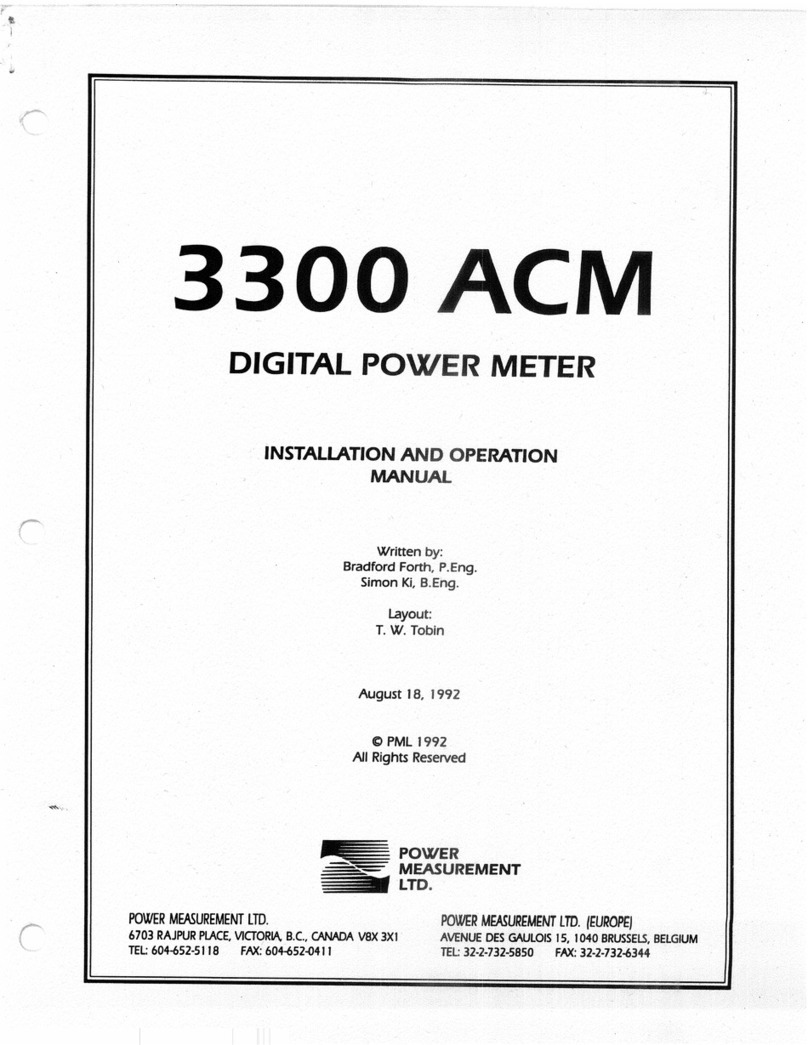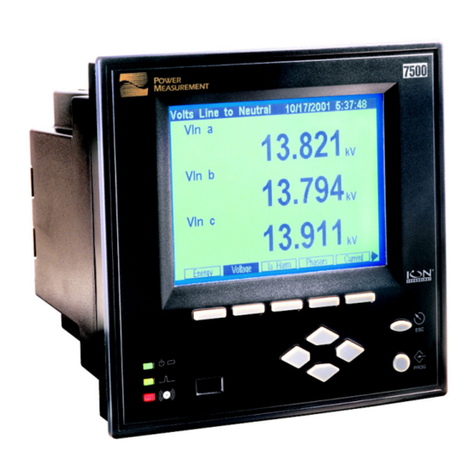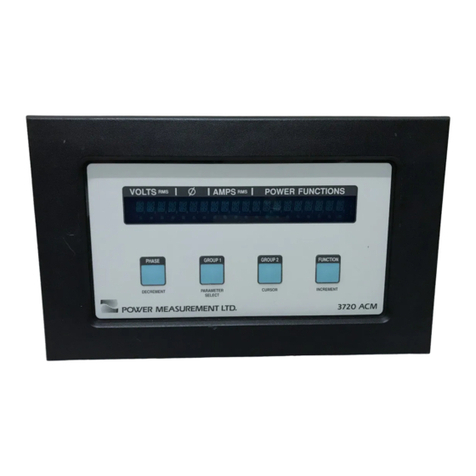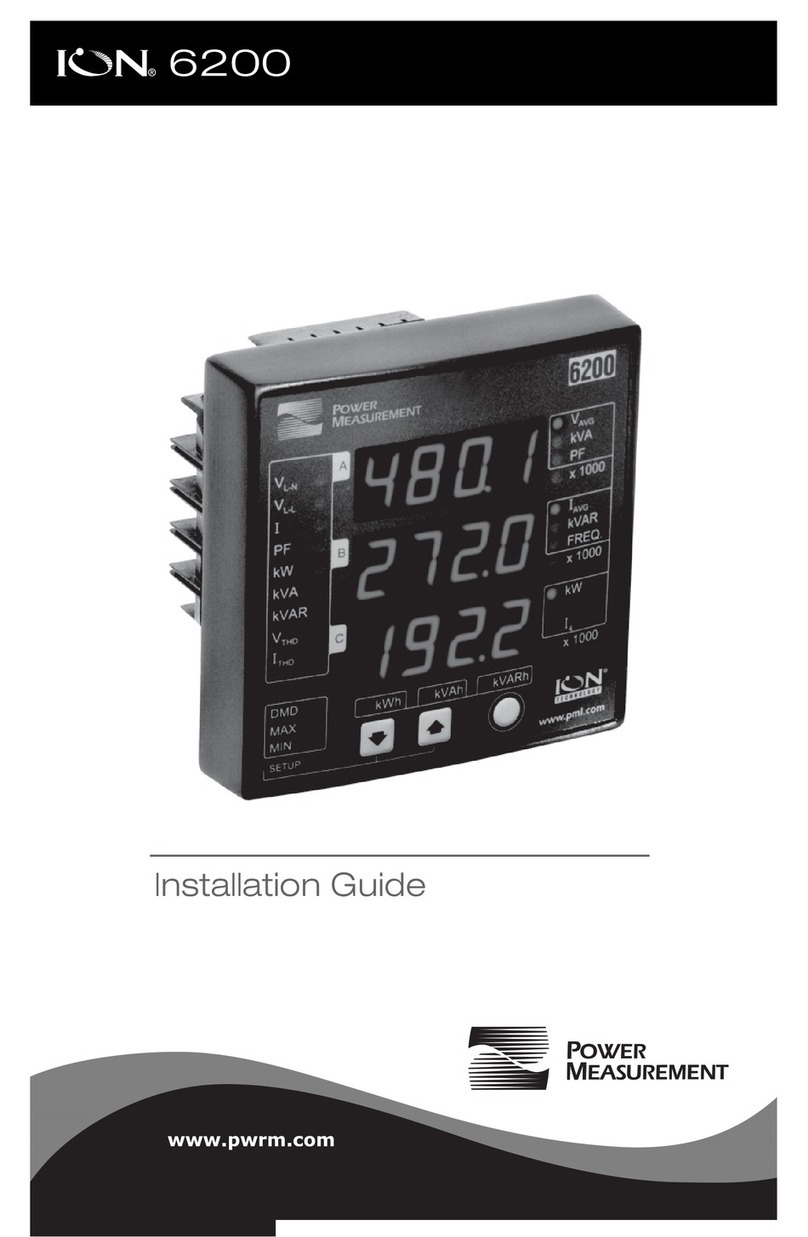
4
The Ringer Equivalence Number (REN) for the ION 8000 series optional internal modem is 0.6. Connection to the
ION 8000 series internal modem should be made via an FCC Part 68 compliant telephone cord (not supplied). The
ION 8000 series cannot be used on a public coin phone service or party line services.
Network Compatibility Notice for the Internal Modem
The internal modem in meters equipped with this option is compatible with the telephone systems of most countries
in the world, with the exception of Australia and New Zealand. Use in some countries may require modification of the
internal modem’s initialization strings. If problems using the modem on your phone system occur, please contact
Power Measurement Technical Services
Standards Compliance
Limitation of Liability
Power Measurement Ltd. (“Power Measurement”) reserves the right to make changes in the device or its
specifications identified in this
document without notice. Power Measurement advises customers to obtain the
latest version of the device specifications before placing orders to verify that the information being relied upon
by the customer is current.
Regardless of whether any remedy set forth herein fails of its essential purpose, except to the extent the following
limitation is prohibited by applicable law, Power Measurement shall not, in any event or under any legal claim
or theory (whether based on contract, indemnity, warranty, tort (including negligence and strict liability) or
otherwise), be liable to the original purchaser or any other person or entity for special, indirect, incidental,
punitive, liquidated, special or consequential damages whatsoever with respect to any purchased product,
including, without limitation, business interruption, loss of use, profit or revenue, even if Power Measurement has
been advised of the possibility of such damages. To the extent that a limitation or exclusion of consequential
damages are prohibited by applicable law, then Power Measurement’s liability shall be limited to twice the
amount of the relevant purchased product. Not to limit the foregoing, a) Power Measurement shall not be liable
for any claim (other than a claim solely for the breach of one of the above Warranties that is made in accordance
with the above described procedures) made by the original purchaser, its employees, agents, or contractors for
any loss, damage, or expense incurred due to, caused by, or related to any purchased product; and b) the above
Warranties are the original purchaser's exclusive remedy and Power Measurement hereby expressly disclaims all
other warranties, express or implied, including, without limitation, warranties of non-infringement and the
implied warranties of merchantability and fitness for a particular purpose.
These limited Warranties shall not apply to any product that has been subject to alteration, accident, misuse,
abuse, neglect or failure to exactly follow Power Measurement's instructions for operation and maintenance. Any
technical assistance provided by Power Measurement's personnel or representatives in system design shall be
deemed to be a proposal and not a recommendation. The responsibility for determining the feasibility of such
proposals rests with the original purchaser and should be tested by the original purchaser. It is the original
purchaser’s responsibility to determine the suitability of any product and associated documentation for its
purposes. The original purchaser acknowledges that 100% "up" time is not realizable because of possible
hardware or software defects. The original purchaser recognizes that such defects and failures may cause
inaccuracies or malfunctions. Only the terms expressed in these limited Warranties shall apply and no
distributor, corporation or other entity, individual or employee of Power Measurement or any other entity is
authorized to amend, modify or extend the Warranties in any way.
The information contained in this document is believed to be accurate at the time of publication, however, Power
Measurement assumes no responsibility for any errors which may appear here and reserves the right to make
changes without notice.
ION, ION Enterprise, ION Setup, ION Wire, PEGASYS, ION 6200, ION 7300, ION 7330, ION 7350, ION
7500, ION 7600, ION 7700, ION 8300, ION 8400, ION 8500, COM32, COM128, Vista, VIP, Designer,
Reporter, MeterM@il, WebMeter, EtherGate, ModemGate, Xpress Card, Feature Packs and "smart energy
everywhere" are either registered trademarks or trademarks of Power Measurement. All other trademarks are
property of their respective owners.
Covered by one or more of the following patents:
U.S. Patent No's 6563697, 6397155, 6186842, 6185508, 6000034, 5995911, 5828576, 5736847,
5650936, D459259, D458863, D435471, D432934, D429655, D429533.
Canadian Patent No's 2148076, 2148075, D97355, D97356.
Other patents pending.

